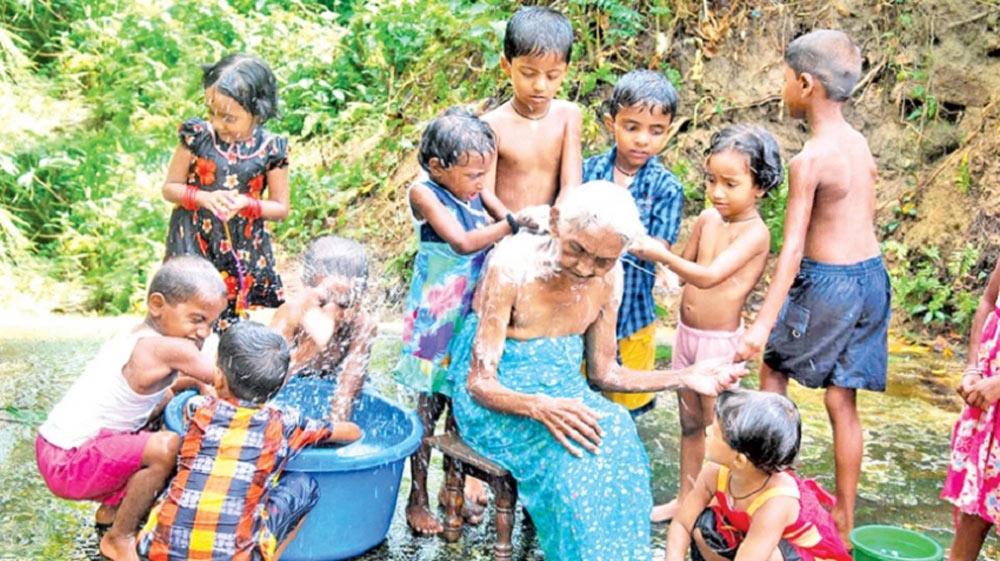Reply To:
Name - Reply Comment

By Nuzla Rizkiya
Sri Lanka is a country currently experiencing significant demographic shifts with a declining fertility, a rapidly ageing population and the swiftly changing migration patterns. As the proportion of elderly citizens growing and the working-age population shrinking, the situation presents both challenges and opportunities for sustainable development in the country.
However, before fully addressing the demographic shift, it is crucial to first understand its effects on various sectors such as the economy, healthcare and social services. Analysing these impacts will provide valuable insights into the challenges Sri Lanka faces while also presenting opportunities to rethink how society values and supports its elderly.
Sri Lanka is not alone in this journey. Countries like Japan, which has been at the forefront of demographic change for decades offer valuable lessons on how to manage and even benefit from an aging population. Japan’s innovative solutions in areas such as healthcare, workforce engagement and social integration for the elderly have allowed it to effectively mitigate some of the biggest challenges posed by a rapidly aging population. In a similar way, Sri Lanka too should begin addressing these demographic changes by drawing inspiration from successful global examples and implementing such proactive strategies.
Understanding the demographic shift
According to a report by the United Nations Population Fund (UNFPA) and the Department of Census and Statistics Sri Lanka's population stands at 22.037 million as of February 2024, up from 20.359 million in 2012. Although if the figures indicate that the population has grown, the annual population growth rate has been observed to be steadily declining since 1953, averaging 1.1 percent per year between 1981 and 2012. This reduction is mainly attributed to the lower birth rates, a consistently low death rate and the outward migration. Projections suggest the population will peak at around 24.8 million by 2050 before starting to decline.
Sri Lanka has experienced a significant reduction in its Total Fertility Rate (TFR), falling from 5.3 children per woman in 1953 to an estimated 1.97 in 2023, which is below the replacement rate of 2.1. This decline is mainly attributed to delayed marriages and childbirth, an increase in childlessness, and a greater use of contraception and terminations.
In contrast, Sri Lanka's Crude Death Rate has risen in recent years, increasing from 6.7 deaths per 1,000 people in 2019 to 8.2 deaths per 1,000 in 2023. In 2019, the main causes of death were identified to be ischemic heart disease and other Non-Communicable Diseases (NCDs). While the COVID-19 pandemic might have played a role in the recent rise in mortality, further investigation is still needed to fully determine the specific contributing factors.
Moreover, Sri Lanka's population structure is also currently undergoing a notable shift, characterized by both a 'youth bulge' and rapid aging. By 2041, one in four Sri Lankans is expected to be over 60, a significant rise from the 12.4% recorded in 2012. Women are expected to live longer than men beyond age 60, leading to the feminization of aging. Furthermore, the working-age population is projected to start declining by 2030. These demographic changes are taking place at a much lower per capita income level compared to many other nations.
Lastly, the migration from Sri Lanka, both internal and international has had a significant impact on the country’s demographic and economic landscape. Each year, around 230,000 to 250,000 labour migrants, mostly heading to the Middle East, leave the country. This has created a sizable migrant population that plays a crucial role in the economy, contributing an average of USD 7 billion annually in remittances.
While this demographic shift brings out certain challenges such as the shrinking workforce and increased pressure on healthcare systems, the interconnected trends also open up doors to explore opportunities to harness the potential for a ‘demographic dividend’ required to facilitate overall sustainable development.
Converting demographic shifts to opportunities of sustainable development
By embracing the opportunities presented by this demographic shift, Sri Lanka too can pave a path toward a more inclusive and prosperous future. To achieve this, the country must focus on implementing forward-thinking policies that address the needs of its aging population together while investing in education, healthcare and workforce development to support the younger generations. Encouraging innovation in healthcare, improving social services and facilitating intergenerational collaboration will be important to navigate these changes successfully.
With strategic planning and a commitment to sustainable development, Sri Lanka can turn these challenges into opportunities, to make sure that all its citizens, regardless of age, contribute to and benefit from the nation's progress. The demographic transition can be a powerful catalyst for creating a vibrant and stable future for Sri Lanka where every generation is valued and empowered.